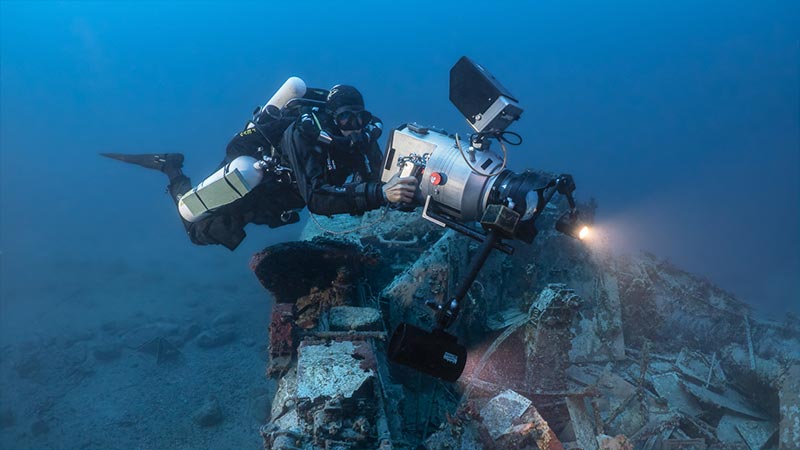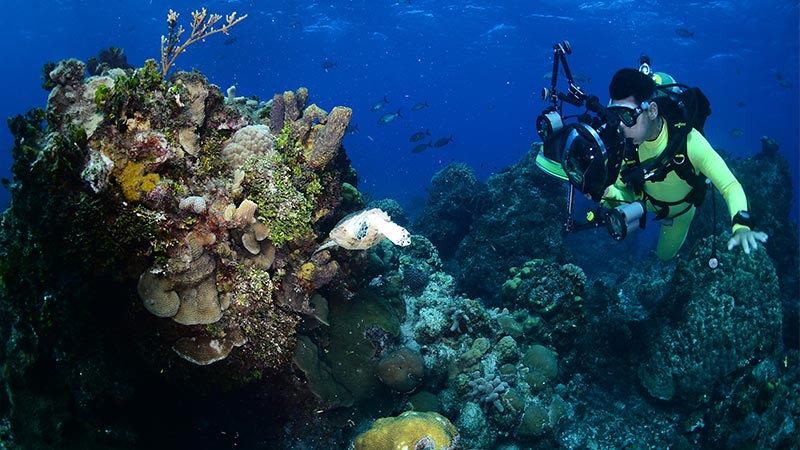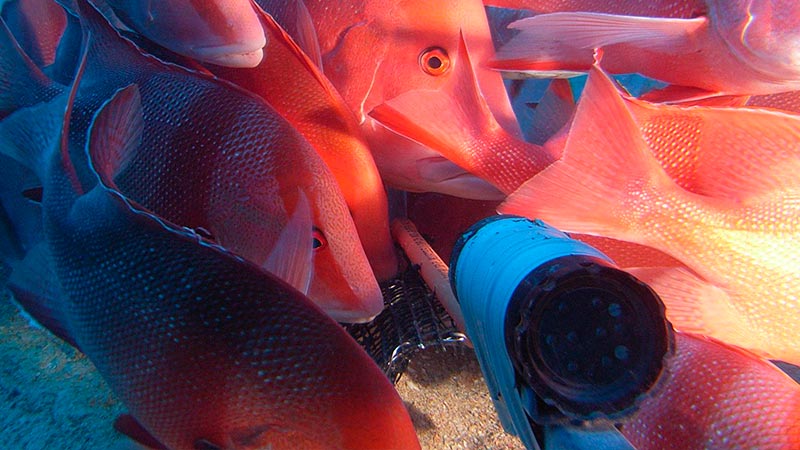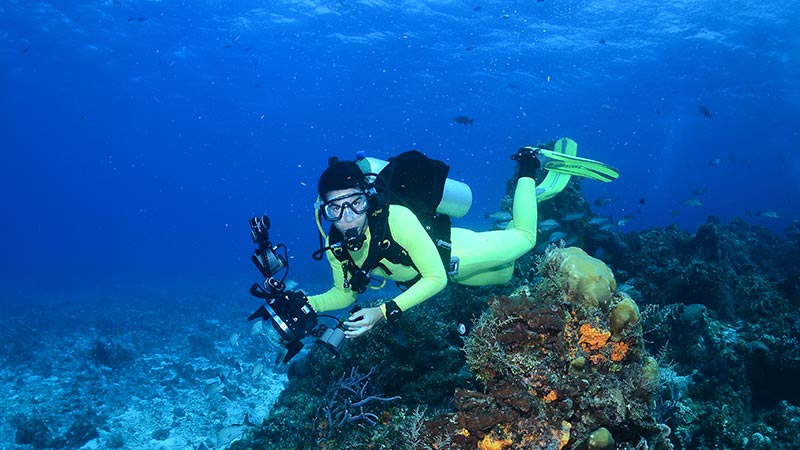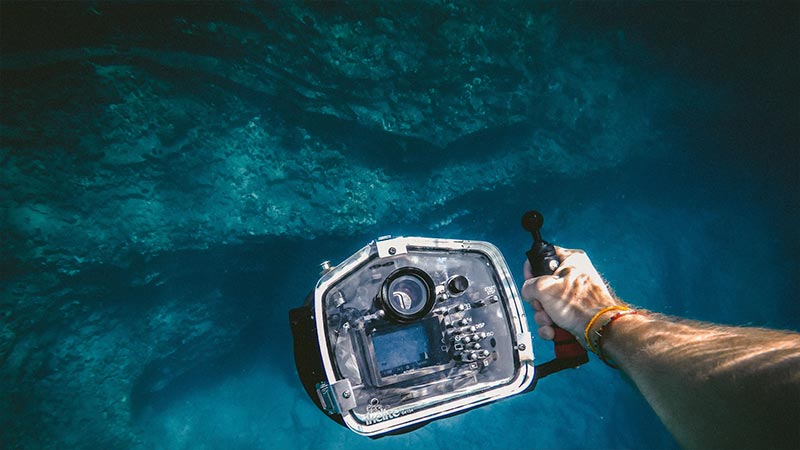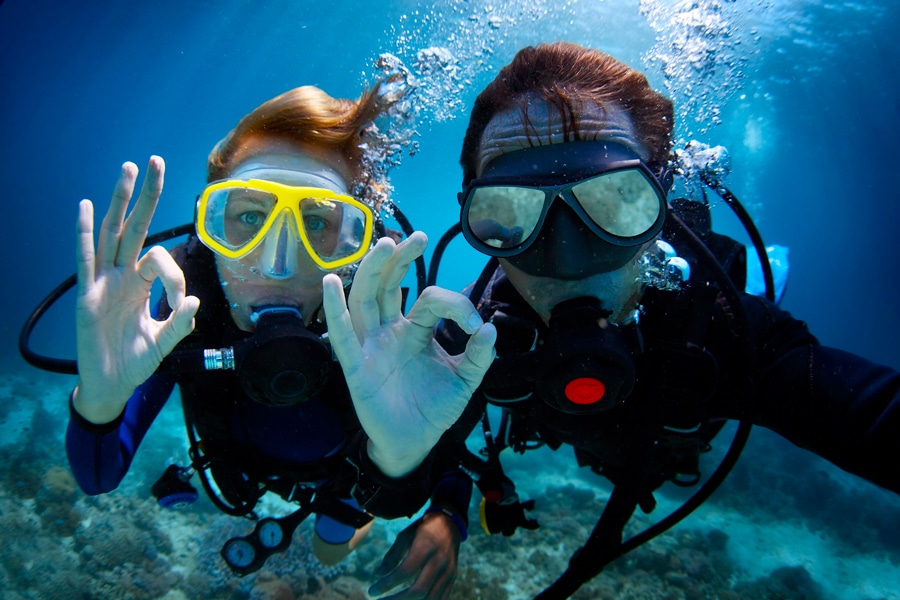5. Underwater Video Equipment
First, you have to consider your needs and budget.
Underwater Video Cameras
For those who don’t want to spend extra money, it’s okay. There are mobile phones that are perfectly suited for shooting underwater videos with just the purchase of a waterproof case.
There are also compact cameras that are ideal for beginners. They’re small and you can also use wet lenses to take wide-angle or macro photos.
If you’re looking for something easy and portable, action cameras like GoPro are great for shooting underwater videos, but if you’re interested in photography, these cameras may be limited.
For those seeking the best image quality, DSLR underwater video cameras are the perfect choice.
Housings
You’ll need housing to protect your camera from water and pressure, so make sure that your underwater video camera brand has a compatible one before you buy it.
There are two types: polycarbonate ones, which are more affordable but less durable, and aluminum ones, which are more expensive but durable and reliable. These are my favorite.
Lenses and Optics
Do you want to photograph tiny animals in underwater macro photography? You need wet close-up lenses, which are magnifying glasses that attach to the housings. There are different types of magnification, +10, +20, +25. The number indicates the amount of magnification the image will have.
Wide-angle lenses combined with domes to eliminate refraction provide a wider field of view. This allows you to take close-up photos of extensive underwater landscapes or large animals that can fit in the frame.
Do you want a curious point of view in underwater macro photography? Try endoscopic or micro-angular lenses. These allow you to capture small things without the background becoming blurred.
By the way, don’t forget about the lens mounting system. 😉
Supports, Arms, and Floats.
The supports or plates are used to transport and hold all the underwater photography equipment. These supports can also have handles for better grip. On the plate, in addition to the camera, the arms that hold the underwater lights that allow us to illuminate the underwater video are placed.
There are two types of arms: flexible and rigid. Flexible arms are constructed of a single piece and are easy to use. On the other hand, rigid arms consist of several sections joined by joints that are tightened and loosened to move them at different angles.
Floats are placed on the arms to compensate for the weight of the equipment. In underwater video, they are important as they will help you achieve smoother and more stable shots.
Visors act as magnifying glasses for the camera’s LCD screen and prevent glare so you can see what you’re filming. They are attached to the housing.
Underwater Video Lighting, Diffusers, and Snoots
Floodlights are ideal for video as their continuous light allows you to see the final result in real-time.
Diffusers are white plastics that are placed on the front of the floodlights and are responsible for diffusing their light, making it more even. In your underwater videos, they will reduce the appearance of suspended particles and reflections.
Snoots are cones that are placed on the front of floodlights to concentrate light on what you want to illuminate. They are great for macro shots, along with the tripod we already discussed.
Underwater video editing software
Lastly, for underwater video editing software, if you don’t want to complicate things, use the basic editing software on your computer, like iMovie or Windows Movie Maker. They are easy to use, but you won’t be able to do much with them. GoPro Studio is an excellent (and free) solution. For the more advanced users, we have paid programs like Adobe Premier Pro or Final Cut, among others.
In summary, if you want to create the best underwater videos, you need to leave bad habits, follow the proven tips I’ve given and have good equipment, in that order. Remember, it’s not the machine that makes great underwater videos, it’s you.
So, are you ready to make underwater videos with Dressel Divers in the Caribbean? Write us.




